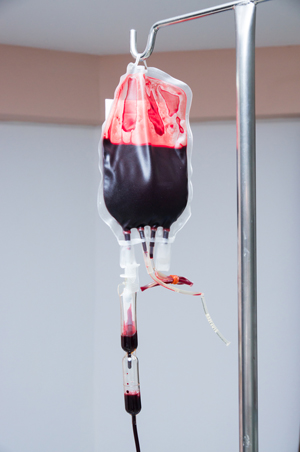Drawing Blood After Transfusions
It all boils down to two questions.
by Dennis Ernst • June 22, 2021

How long after a transfusion do you have to wait before drawing a blood sample in order to get accurate results? It's one of the most common questions I receive. Physicians who transfuse patients want to know the effect of the infusion asap. Yet drawing blood during or after a transfusion increases the risk of obtaining results that don't accurately reflect the patient's condition. By the time the sample is tested, the patient's condition may have changed dramatically. So, it's a real conundrum, but the answer can be boiled down to two questions: what is being drawn and why?
Here's the skinny. The main objective in collecting a post-transfusion specimen is to acquire a homogeneous sample of patient blood and donor cells. A multitude of variables determine homogeneity including the status of the patient's heart, kidneys, and circulatory system, the patient's pre-transfusion blood volume, and the age and volume of the transfused cells. The homogeneity of circulating blood does not occur in patients receiving blood due to an acute hemorrhage until all hemorrhaging has been stopped.
Cell counts drawn during a transfusion provide little useful information except in trauma cases where the patient's condition is changing rapidly and must be monitored frequently. Once all donor cells have been transfused, accurate cell counts may be obtained immediately after transfusion. However, waiting an hour post-transfusion may yield more accurate results because of the many variables that affect donor cell distribution.
The levels of several chemistry analytes can be elevated for prolonged periods after transfusion. During storage of a donor unit, a significant percentage of red blood cells can hemolyze. Therefore, post-transfusion specimens can have elevated levels of plasma hemoglobin, potassium, ammonia, urea nitrogen, uric acid, vitamin B12, LD, and serum iron. These levels can remain elevated up to 24 hours, depending on the patient's kidney function and other variables. Laboratories testing post-transfusion specimens for these analytes should consider documenting the potential affect of the transfusion on these tests when releasing results.
The Clinical and Laboratory Standards Institute (CLSI) has not established criteria for drawing post-transfusion cell counts. However, its venipuncture standard (GP41-A7) details the proper procedure for drawing blood from a patient receiving IV fluids of any kind, including donor blood.(5) The standard states drawing above an active IV is rarely acceptable and should be considered with great caution.
Draws from the same arm as an infusion are to be avoided if at all possible. When unavoidable due to difficulty in accessing other veins, CLSI suggests having the infusion temporarily shut off (2 minutes) prior to the puncture, tightening the tourniquet below the IV site and performing the puncture below the tourniquet. Draws from the same arm in which fluids are being infused must be documented to accompany test results, including what was being infused.
In summary, drawing samples during or immediately following a blood transfusion is critical to managing anemic patients. While the results have a limited validity, they provide critical information on the effects of the transfusion and drive lifesaving medical decisions. When delaying the draw for an hour or two after the transfusion(s) have completed does not threaten the responsible management of the patient, the results will be more accurate and be valid for a longer period of time post-collection.
Related Posts and Information
overall rating: my rating: log in to rate
YouTube preanalytical test results transfusion
97 Comments
Thanks!
I get these questions often. Thanks for all you do for this profession.
Bruce Brown, 06/24/2021 08:39:31
You're welcome
Happy to serve you and all healthcare professionals, Bruce.
Dennis Ernst, 06/24/2021 09:38:13
Dr. Still insists on it being drawn
Where I work, I have been asked to draw blood during transfusion many times. Even after explaining that results will not be accurate. I now ask for Dr.s name and put in comment on draw that this was drawn during transfusion and Dr. was told result will not be accurate.
Alice Shaff, 06/24/2021 21:52:31
Dr. Still insists on it being drawn
I think this is common, Alice. Your approach is about all you can do. Sometimes physicians just want to know what the results were at the time of the draw compared to pre-transfusion results just to get some kind of sense, however temporary, of the direction the patient is going. Kinda makes sense.
Dennis Ernst, 06/25/2021 08:36:32
